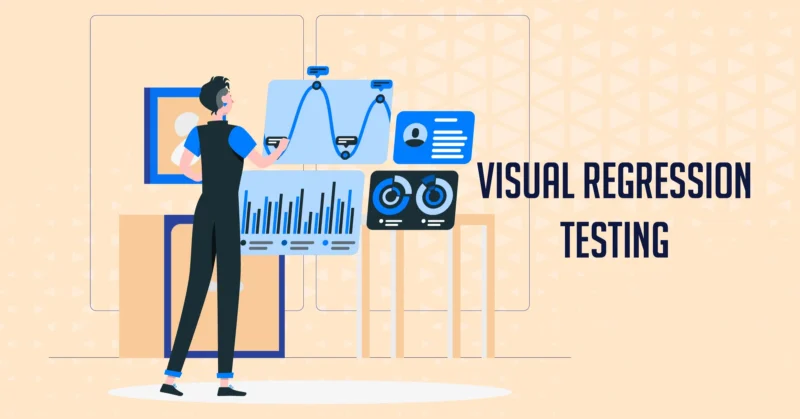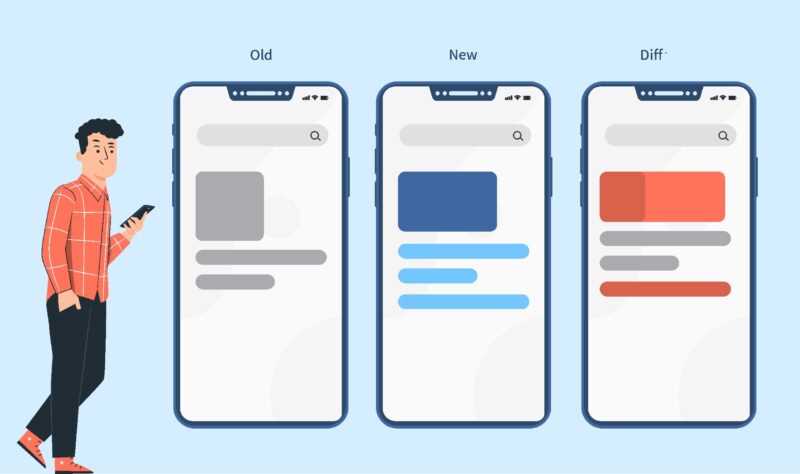Visual regression testing helps product teams ensure that their users continue having a smooth experience when interacting with an application, even as improvements and changes are made under the hood.
By comparing screenshots after code updates, teams can double-check that all the buttons, fonts, and layouts remain easy for human eyes and hands to navigate as intended.
This type of testing is certainly valuable for the end user’s satisfaction. However, busy teams sometimes struggle to spend enough quality time on visual checks amidst tight deadlines. If you need assistance with this process, check out https://www.lambdatest.com/learning-hub/visual-regression-testing.
Also, here are the most common challenges and solutions that will help you complete your project in the right way.
1. Time and Cost

Visual regression testing involves running a suite of tests every time code changes are made, which can be time-consuming and costly for busy teams. The challenge lies in justifying the needed time and expense to stakeholders, especially when some tests may appear redundant or repetitive to those less familiar.
However, automating visual regression tests through tools like TestComplete and BrowserStack Automate can significantly reduce time demands on overworked individuals. These solutions allow testers to create automated UI tests quickly that then run automatically whenever updates occur, thereby ensuring changes are tested efficiently without distracting teammates from other important duties. This helps effectively demonstrate the continuing value of comprehensive checks to all involved.
2. Upkeep and Complications
As an application expands to better serve more people through added capabilities, the number of checks to verify a positive experience grows too. This results in test bundles that become increasingly knotted over time, difficult to navigate and fix when flaws appear.
Thankfully, intelligence and skillful tools can untie these knots. Solutions like Rainforest QA interact directly with what users see, making verifications less prone to failure from minor adjustments underneath the surface.
3. Delicate Checks

Evaluations that are too fragile often signal issues where clarity remains. This kind of misleading information can discourage both the creators improving the work and the guardians maintaining quality, jeopardizing the trust placed in their important process.
Fortunately, with proficiency and care come stronger inspections. By selecting tools concentrating on visual performance aloft rather than each minor line of code below, verifications become more resilient against harmless changes. This reduces distracting alarms and boosts dependability.
4. Device Fragmentation
Ensuring the user interface looks seamless regardless of the device’s screen size or resolution can be hugely challenging as technology progresses. People access apps in many different ways, so inconsistencies that arise from this fragmentation are tricky to catch. However, automated testing tools help address this issue tremendously.
Services like BrowserStack let quality checks replicate real-world usage by testing directly on hardware. Additionally, Playwright facilitates cross-browser evaluation, reducing set-up frustrations. Together, these solutions help comprehensive testing account for the diverse needs and tools of every individual. The goal remains providing a positive experience no matter how or where people prefer to engage.
5. Dynamic Content
Handling visual inconsistencies that can arise from content automatically loading onto a page over time is a significant challenge for testers. When elements change depending on context or user actions, it introduces more uncertainty that tests need to account for. If not addressed properly, dynamic functionality could cause tests to fail inconsistently.
Integrating visual regression testing directly into the regular product development cycle helps surface these issues quickly before they impact real users. Building test scenarios that simulate various content states and load sequences can help verify functionality under different conditions.
Additionally, automation frameworks like Playwright that have robust mechanisms for synchronizing tests with asynchronous content and waiting for elements are valuable tools for managing dynamic page updates reliably. Bringing these capabilities together helps ensure a seamless experience even as applications evolve.
6. Cultural Customization

Adjusting applications for diverse audiences around the world introduces new variables that could lead to inconsistencies. Things like text length and direction can change significantly between languages.
Thorough testing is key to ensure equal usability regardless of location. Automation services that facilitate localization checks through simulations of multiple environments are invaluable.
Playwright allows tests to run across a range of languages and settings emulating how people engage based on culture. This helps confirm the experience feels smooth and welcoming on a truly international scale.
7. Test Prioritization
Executing all tests, regardless of importance or frequency of use, becomes increasingly inefficient as case sizes grow larger. Running unnecessary or redundant checks takes up valuable time and resources.
To better maximize efforts, prioritizing high-impact and common scenarios ensures focus is placed appropriately. Regularly auditing the test suite to refine relevant criteria like issue history helps guarantee the most useful evaluations aren’t overlooked as needs change. Striking a balance optimizes efforts, retaining coverage of critical functions people rely on daily.
Proper prioritization keeps guardianship efforts impactful as the application evolves at an appropriate scale. Over time, selective attention from all involved will help safeguard quality for the use cases that matter most.
8. Continuous Integration and Delivery Testing

Coordinating visual regression testing within fast-paced development workflows like CI/CD presents logistical challenges. Ensuring these important checks run smoothly requires planning and reliable tools.
Effective notification of test results to the right team members for timely resolution of issues is important. Services such as Jenkins offer plugin support to automatically communicate failures via email.
Creating summary reports that call out new regressions can streamline addressing issues compared to separate alerts.
Last Words
While visual regression testing brings many benefits, teams can face challenges due to a busy workload and tight deadlines. This article explored the most common hurdles like time constraints, test upkeep, and dynamic content.
By leveraging powerful automation tools, teams can overcome these obstacles and ensure a seamless user experience despite code changes. Solutions exist to reduce time spent on routine tasks and account for diverse devices and languages.
With the right prioritization and integration into development workflows, visual checks provide continuous value. As one exhausted tester shared, “Catching issues early saves headaches down the line. The time invested really pays off to keep customers happy.” With diligence and technology, quality remains a priority amid hectic schedules.
Related Posts:
- Server Downtime: Common Causes and How to Prevent Them
- Common Types of Maritime Accidents and How to Avoid Them
- What Are IoT Devices and What Should You Know About Them?
- Staying Safe: How To Avoid Common Warehouse Hazards
- Scissor Lifts - Should You Buy Or Hire Them?
- Testing on Safari for Windows ─ Effective Strategies…








